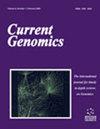全球和地方祖先及其重要性:小型回顾
IF 1.4
4区 生物学
Q4 BIOCHEMISTRY & MOLECULAR BIOLOGY
引用次数: 0
摘要
:掺杂是一种进化机制,是显著改变种群组成的最快方法。在动物育种史上,基因掺杂分别利用了若干性状和遗传多样性的互补性和异质性现象,提供了短期和长期的优势。目前,通过血统记录进行混杂分析的传统方法已被全基因组标记数据大大取代,从而可以进行更精确的估计。在这些标记中,SNP 因其成本效益高、不太费力、基因分型自动化容易而成为热门选择。某些标记物可以从来源不明或不愿透露血统的 DNA 样本中提示人群起源的可能性,这些标记物被称为祖先信息标记物(AIM)。在特定位点水平上揭示掺杂水平被称为本地祖先,可用于识别近期选择性反应的迹象,并解释遗传漂移。考虑到遗传混杂和地方祖先的重要性,本微型综述将阐述这两个概念,包括基础知识、估算/识别方法、所用工具/软件及其应用。本文章由计算机程序翻译,如有差异,请以英文原文为准。
Global and Local Ancestry and its Importance: A Mini-Review
: The fastest way to significantly change the composition of a population is through admixture, an evolutionary mechanism. In animal breeding history, genetic admixture has provided both short-term and long-term advantages by utilizing the phenomenon of complementarity and heterosis in several traits and genetic diversity, respectively. The traditional method of admixture analysis by pedigree records has now been replaced greatly by genome-wide marker data that enables more precise estimations. Among these markers, SNPs have been the popular choice since they are cost-effective, not so laborious, and automation of genotyping is easy. Certain markers can suggest the possibility of a population's origin from a sample of DNA where the source individual is unknown or unwilling to disclose their lineage, which are called Ancestry-Informative Markers (AIMs). Revealing admixture level at the locus-specific level is termed as local ancestry and can be exploited to identify signs of recent selective response and can account for genetic drift. Considering the importance of genetic admixture and local ancestry, in this mini-review, both concepts are illustrated, encompassing basics, their estimation/identification methods, tools/- software used and their applications.
求助全文
通过发布文献求助,成功后即可免费获取论文全文。
去求助
来源期刊

Current Genomics
生物-生化与分子生物学
CiteScore
5.20
自引率
0.00%
发文量
29
审稿时长
>0 weeks
期刊介绍:
Current Genomics is a peer-reviewed journal that provides essential reading about the latest and most important developments in genome science and related fields of research. Systems biology, systems modeling, machine learning, network inference, bioinformatics, computational biology, epigenetics, single cell genomics, extracellular vesicles, quantitative biology, and synthetic biology for the study of evolution, development, maintenance, aging and that of human health, human diseases, clinical genomics and precision medicine are topics of particular interest. The journal covers plant genomics. The journal will not consider articles dealing with breeding and livestock.
Current Genomics publishes three types of articles including:
i) Research papers from internationally-recognized experts reporting on new and original data generated at the genome scale level. Position papers dealing with new or challenging methodological approaches, whether experimental or mathematical, are greatly welcome in this section.
ii) Authoritative and comprehensive full-length or mini reviews from widely recognized experts, covering the latest developments in genome science and related fields of research such as systems biology, statistics and machine learning, quantitative biology, and precision medicine. Proposals for mini-hot topics (2-3 review papers) and full hot topics (6-8 review papers) guest edited by internationally-recognized experts are welcome in this section. Hot topic proposals should not contain original data and they should contain articles originating from at least 2 different countries.
iii) Opinion papers from internationally recognized experts addressing contemporary questions and issues in the field of genome science and systems biology and basic and clinical research practices.
 求助内容:
求助内容: 应助结果提醒方式:
应助结果提醒方式:


